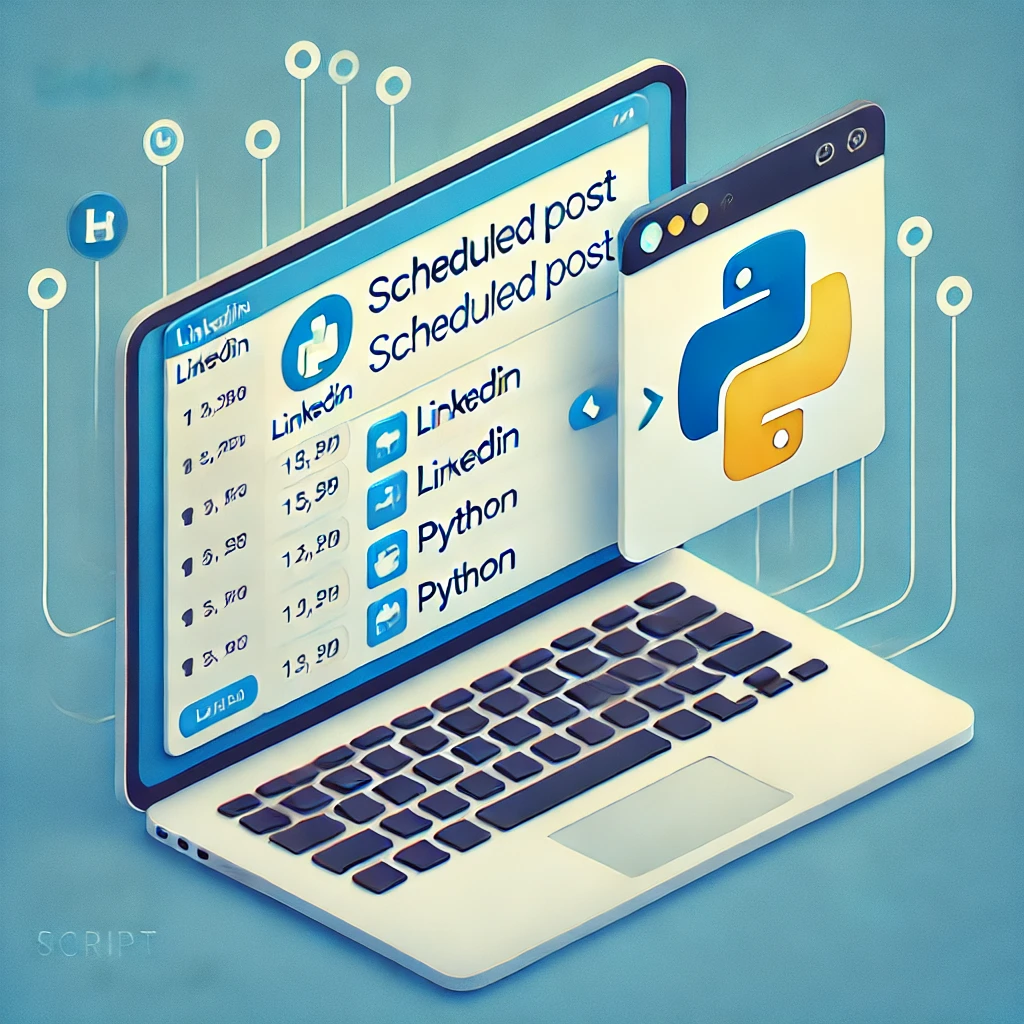Introduction
Maintaining a consistent posting schedule on LinkedIn can help you stay engaged with your professional network and increase your visibility. Automating this process can save time and ensure that your posts are published at optimal times. This tutorial will guide you through scheduling LinkedIn posts using Python and Selenium.
Requirements
- Basic knowledge of Python
- Python installed on your system
- Selenium library installed (
pip install selenium) - ChromeDriver or a compatible web driver for your browser
- A text editor (e.g., VSCode, PyCharm)
Step 1: Installing Required Python Libraries
Install the necessary Python libraries using pip:
pip install seleniumStep 2: Setting Up Selenium and ChromeDriver
- Download ChromeDriver: Go to the ChromeDriver download page and download the version that matches your Chrome browser version.
- Set Up ChromeDriver: Place the
chromedriverexecutable in a directory that’s in your system’s PATH or in the same directory as your Python script.
Step 3: Writing the Python Script
Create a Python script named linkedin_scheduler.py and start by importing the necessary modules and setting up the Selenium WebDriver:
from selenium import webdriver
from selenium.webdriver.common.keys import Keys
import time
# Initialize the Chrome driver
driver = webdriver.Chrome('path/to/chromedriver')
# Define LinkedIn login credentials
username = 'your_username'
password = 'your_password'
# Open LinkedIn
driver.get('https://www.linkedin.com')
time.sleep(2)
# Function to log in to LinkedIn
def login(username, password):
# Find and fill the username field
user_input = driver.find_element_by_name('session_key')
user_input.send_keys(username)
time.sleep(1)
# Find and fill the password field
pass_input = driver.find_element_by_name('session_password')
pass_input.send_keys(password)
time.sleep(1)
# Press the login button
pass_input.send_keys(Keys.RETURN)
time.sleep(5)
login(username, password)Replace 'your_username' and 'your_password' with your actual LinkedIn login credentials.
Step 4: Automating Post Scheduling
- Create a Function to Schedule Posts: Add the following function to create and schedule LinkedIn posts:
def schedule_post(content, post_time):
driver.get('https://www.linkedin.com/feed/')
time.sleep(2)
# Click on the start a post button
start_post = driver.find_element_by_xpath('//button[contains(@aria-label, "Start a post")]')
start_post.click()
time.sleep(2)
# Find and fill the post content field
post_field = driver.find_element_by_xpath('//div[contains(@class, "ql-editor")]')
post_field.send_keys(content)
time.sleep(2)
# Find and click the post button
post_button = driver.find_element_by_xpath('//button[contains(@aria-label, "Post")]')
# Wait until the scheduled time
current_time = time.time()
wait_time = post_time - current_time
if wait_time > 0:
time.sleep(wait_time)
post_button.click()
time.sleep(2)
# Example usage
post_content = "This is a scheduled post using Python and Selenium."
post_time = time.mktime(time.strptime("2024-07-20 14:00:00", "%Y-%m-%d %H:%M:%S"))
schedule_post(post_content, post_time)- Convert the Desired Post Time: Use the
time.mktimefunction to convert your desired post time into a timestamp, ensuring the post is published at the correct time.
Step 5: Running the Script
Run your Python script to log in to LinkedIn and schedule your posts at the desired times. Ensure that the browser window remains open and the internet connection is stable during the scheduled posting times.
python linkedin_scheduler.pyConclusion
Automating LinkedIn post scheduling with Python and Selenium can streamline your social media management and ensure consistent engagement with your professional network. This tutorial provided a step-by-step guide to setting up a scheduler that automates your LinkedIn posts.
